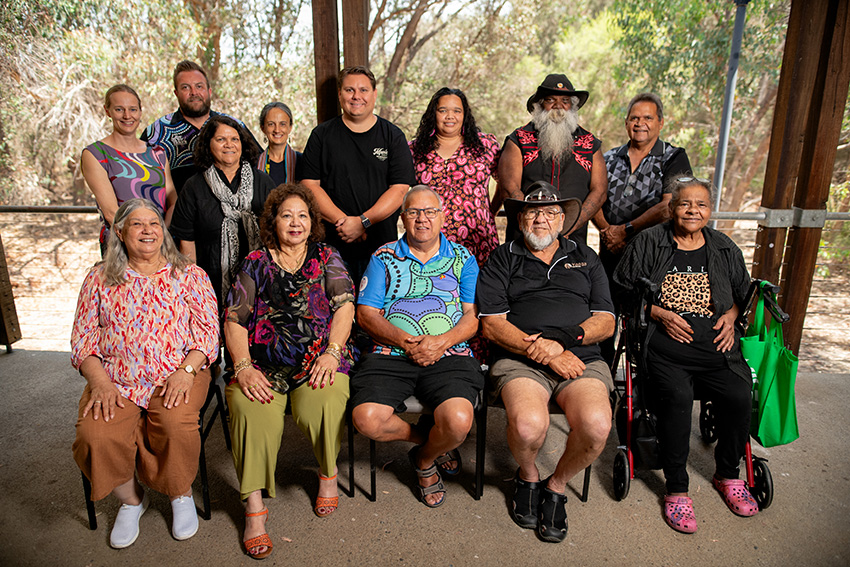This case study relates to Action 3 in the Kep Katitjin – Gabi Kaadadjan Waterwise action plan 3 delivered by the Department of Water and Environmental Regulation; the Department of Biodiversity, Conservation and Attractions; Water Corporation; the Department of Communities; the Department of Planning, Lands and Heritage; the Department of Education; and METRONET.
The Djarlgarro Bilya Waterways Project is a highly collaborative, cross-cultural project that brought together researchers from UWA and members of Boorloo’s Noongar community to record the Noongar cultural values of Boorloo’s waterways. The project was initiated within the Clean Air and Urban Landscapes Research Hub of the National Environmental Science Program. The project extended beyond the life of the Hub through the support of several organisations within the Water Sensitive Transition Network, including the Water Corporation; Department of Biodiversity, Conservation and Attractions; Department of Water and Environmental Regulation; Department of Communities; Department of Planning, Lands and Heritage; Department of Education; METRONET; City of Canning; Perth NRM and Urbaqua.
Under the guidance of a Cultural Advisory Group consisting of Vivienne Hansen, Irene Stainton AO, Glenda Kickett, Mort Hansen and Peter Wilkes, the project recorded the stories of connection with the Djarlgarro Bilya waterways of 13 Traditional Custodians and Knowledge Holders. In the stories, the Elders talked of their lived experience and connection with the waterways, their cultural knowledge of water and how the waterways are important to them, and their perspectives about caring for Boodja, working together and education. While the project focused on the Djarlgarro Bilya, the Canning River, the Elders shared many stories about places along the Swan and Avon rivers, depicting a connectivity of water and culture extending across the metropolitan area.
The project produced a book co-authored by the Elders, a large standalone cultural map artwork produced by two Noongar artists, and a set of short films of the Elders on Country. The Elders and researchers involved in this project believe that the book is a gift to all those that call Boorloo home. The Elders shared their culture and grounded their stories and perspectives in places where most of us live, work, gather and relax, often without knowing the Noongar significance of those places. They hope this project will open a window for Boorloo’s residents to view and understand a city and an environment in ways that they have not seen or understood before. They also hope this project will bring the Elders’ values, place connections, perspectives and worldviews to the forefront of local and regional environmental management and planning. The materials recorded provide a foundation for other outputs the Elders would like to see produced soon, that would help to further elevate their voices and reach different audiences.
An important outcome of this project is learning how to work together. Key ingredients on this journey were deep listening and attention, trust, constantly learning from those involved and consequently adjusting the project’s course, an active approach to ‘decolonise’ research, and a supportive network of stakeholders and funding agencies.



